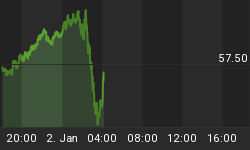
The key to unlocking profits in your trading/investment accounts is three-fold. The first key is to maintain reverence for ones hard-earned trading capital. The second is to manage risk effectively, and the third, is to acquire a consistent edge or comparative advantage in placing quantified odds in favor of successful outcomes, which far outpace the inevitable losses one must endure to prevail over the long run.
Charting, Forecasting, Strategies, and Tactics
Big Picture S&P:

We derive our first element of comparative advantage in observing the long-term price history of each market with which we engage.
This long-term chart of the S&P illustrates two bull markets separated by the bear market of 2008-09.
Objectively charting the markets price action history enables us to define long-term and medium-term trends that are ripe for exploitation.
Big Picture Crude Oil:

Our second element of advantage is to then rigorously test and quantify non-discretionary trading and investment strategies that prove most effective in capturing trends in several different timeframes.
Though the parabola is far more pronounced, the price history and chart of Crude Oil is quite similar to that of the S&P 500. Classic charting techniques and accurate Elliott wave assessments enables us to monitor the progress of our trading strategies across all timeframes.
Big Picture Netflix:

Additional elements of advantage consist of trading around larger positions i.e. employing separate accounts to trade and or hedge the same instruments using tactics and strategies for different timeframes.
Our history and performance record with Netflix exemplifies the efficacy in using multiple accounts to hedge core exposures directly, as it provides the purest form of diversification, especially when all markets are moving sharply in the same direction.
Though we hold positions in three timeframes for each market, today we will share recent outcomes of our efforts to mine profits in our short-term trading accounts.

Above is the nearby S&P mini-futures contract, which is worth $50.00 for each full point of directional movement. In one week's time, we booked $1225 dollars in profits from long positions taken on June 28 at a price of 1335, then reversing short on July 5 at 1359.50. Despite the rally in the last hour of trade, these new short positions have open profit of $350 dollars per contract.
Below is also the nearby S&P mini-futures contract. This chart trades a counter-trend strategy based only upon the price action occurring in concert with the cash session; i.e. it turns off when the cash market is not in session.

The counter trend strategy moved short at 1368.25 just before the Holiday, and within three days, captured 22.5-pts or $1125 dollars per contract in profits on Friday July 6. In keeping with its non-discretionary methodology, the counter-trend strategy went bottom fishing near the lows and moved long at 1347.50 with buy stops to cover at 1342 even.
You can get an idea of just how powerful these methodologies are by looking back on some past performance shared in previous posts. Next, we'll take a look at Crude Oil.

We recently posted activity in Crude Oil here. The trading chart above picks up right where we left off. Long from 80.95, within a week we booked $3550 dollars in profit per contract traded as we reversed short July 6 at a price of 84.50. In the above three futures contracts, we booked a total of $5900 per contract traded in less than a week. We make most all of this information readily available in real time via email alerts to those who subscribe to the Chart-Cast Pilot.
We'll wrap things up with Netflix. Though our model is trading 384-shares at a clip, we relay profits in percentage terms for subscribers trading smaller lots.

Here we took a little more time to rack up profits, as we had been bearish on Netflix in short-term trading accounts on April 9 from a price of 106.90. In addition to booking a respectable 21.67% profit in three-months, we also provided discretionary traders with two "heads-up" buy triggers citing 10-pts and 12-pts of upside price targets prior to the rocket launch on Thursday.
PS
If you are wondering about the month-to-date equity panel showing a loss of $6,594.07 - that's exactly right, even though we just booked a three month 21.67% profit (or $8893.44 on 384 shares). Here's why. It's simply the deception of mark-to-market accounting, which reconciles daily, the open profits held from the price from which we were short as of July 1 relative to the value of position bias profits or losses during the course of the month until its close.
Well that's about it. We do not know what more we can share to provide further examples of how we go about our day-to-day business of assisting our clients in navigating the marketplace.
SOLUTIONS MENU
MEMBERSHIP OPTIONS















